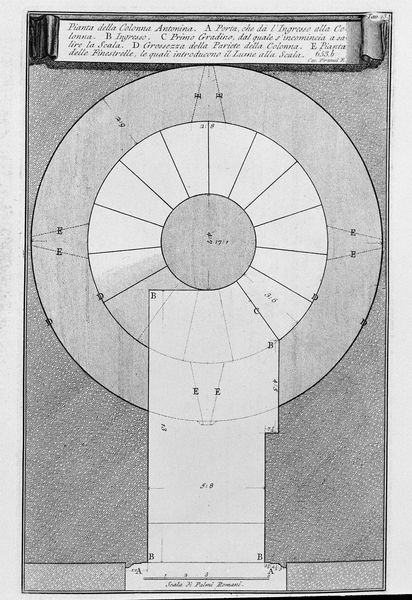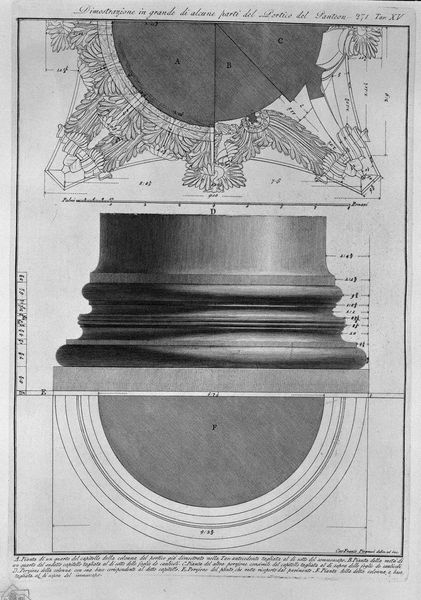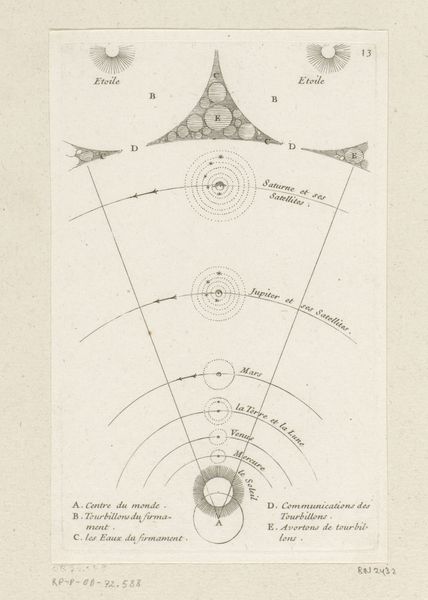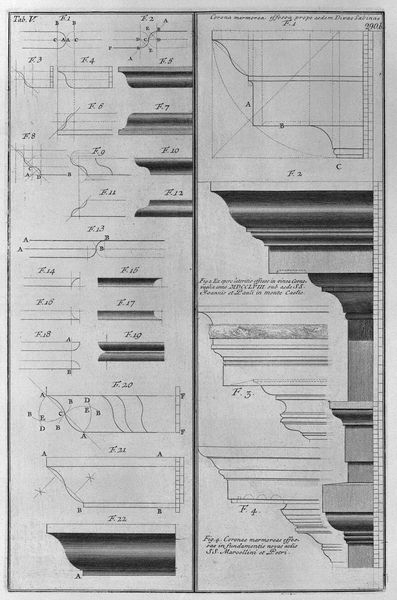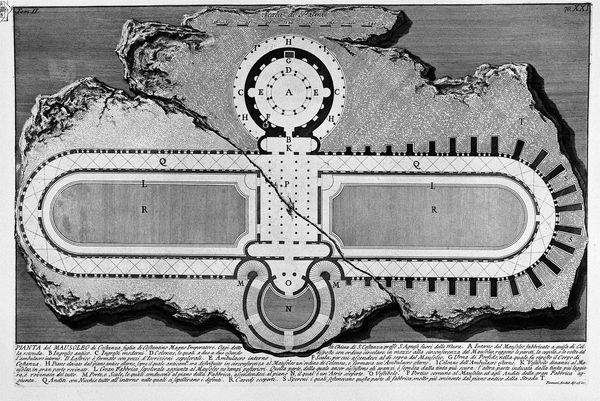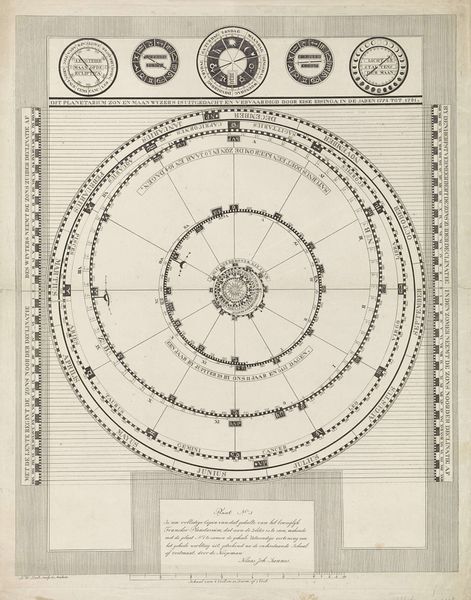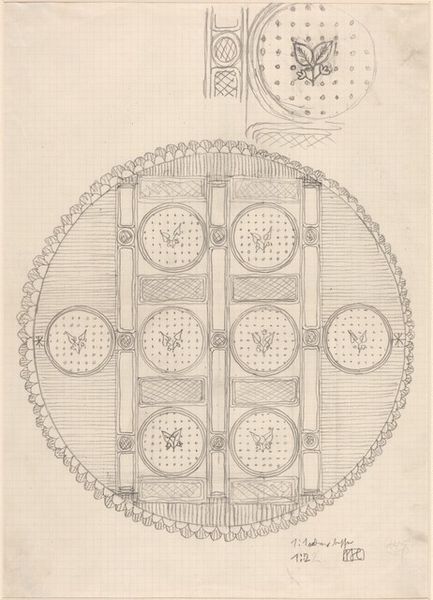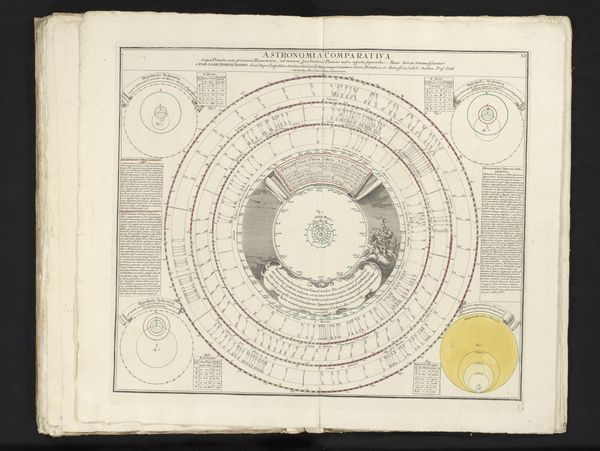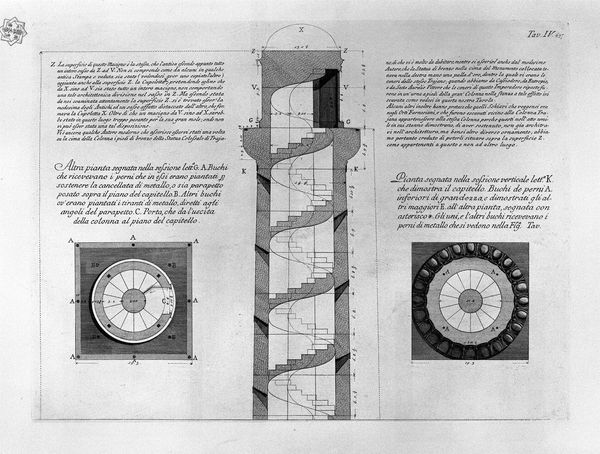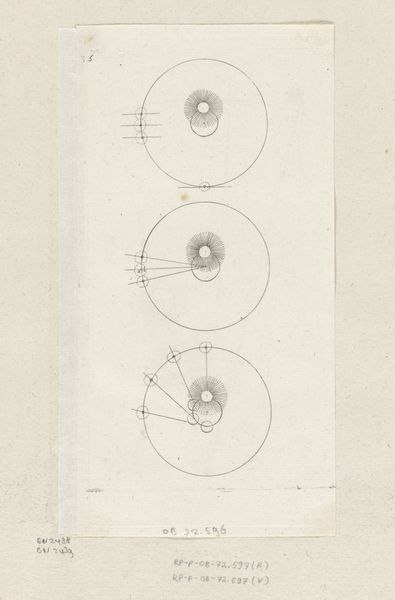
drawing, print, etching, engraving
#
drawing
#
baroque
# print
#
etching
#
old engraving style
#
geometric
#
column
#
history-painting
#
italian-renaissance
#
engraving
Copyright: Public domain
Editor: This is Giovanni Battista Piranesi's etching, "Fragment of a shield fell from above Trophies." The linework is incredibly intricate. It looks like a technical drawing, almost scientific. How would you interpret this work? Curator: It’s an investigation into the visual language of power, isn't it? Those concentric circles… consider them not just abstract geometry, but perhaps symbolic ripples, emanating from a central authority. The very concept of measure becomes an assertion of control. How did Rome measure and therefore control the distribution of water? What is visually most impactful here? Editor: I guess the fact that these are fragments, like ruins? Everything is presented in pieces. Curator: Precisely! That's cultural memory right there. Piranesi presents these remnants – not as mere archaeological artifacts, but as loaded symbols. He encourages us to consider what those fragments *meant* when whole. The scale he shows are about systems of power but have a different function in this print. What do you suppose his purpose was? Editor: It seems like he is trying to use these old measuring systems for his own goals? A reinvention of symbolic form for contemporary audiences? Curator: Exactly. And who was Hadrian and what do his architectural legacies tell us? What narratives are told? These are all open questions embedded within a seemingly precise diagram. It makes me think of how memory works – fragmented, but powerfully evocative. What about you? Editor: I never considered the symbolic weight of something like a measuring system before. Now I understand how a technical drawing can convey something historical but with powerful psychological effect.
Comments
No comments
Be the first to comment and join the conversation on the ultimate creative platform.
